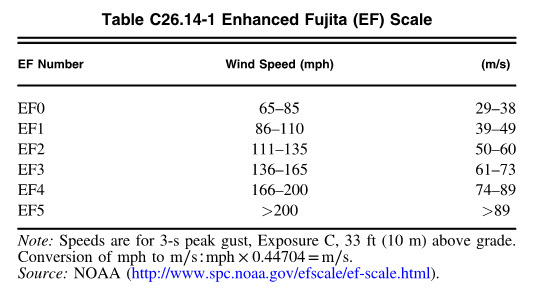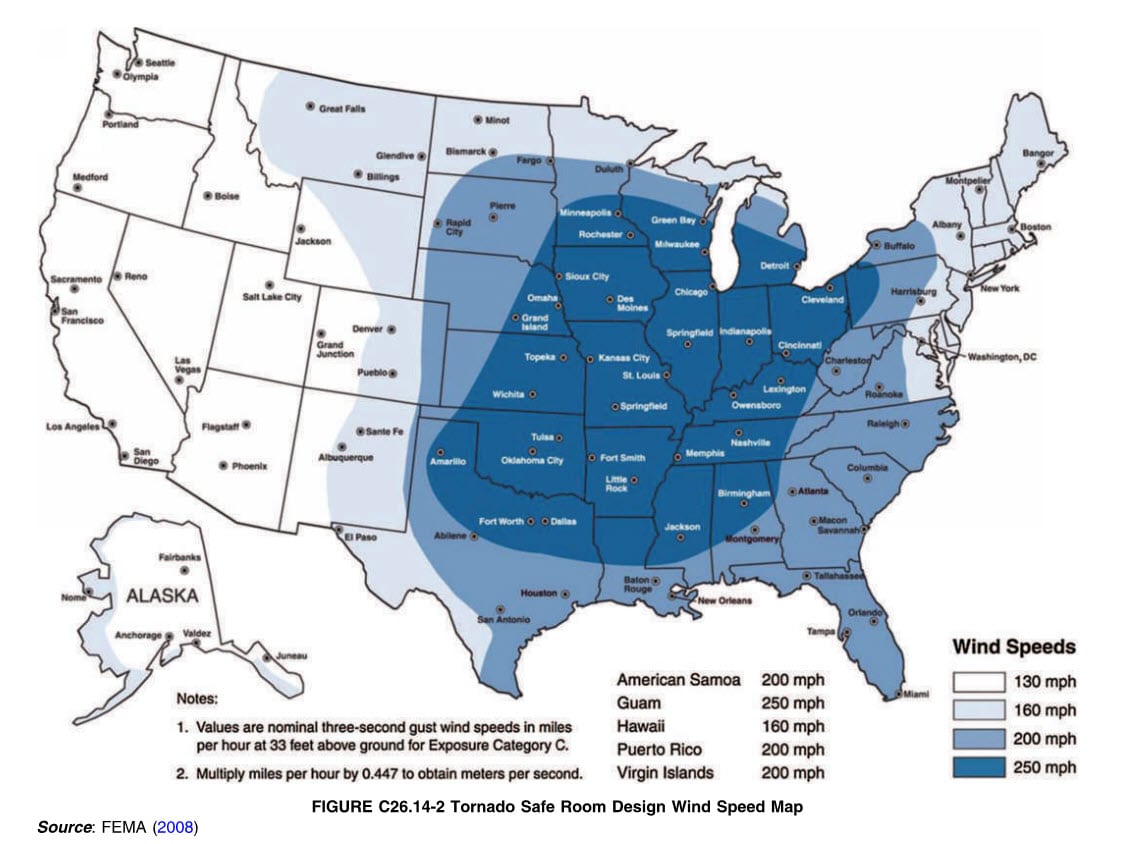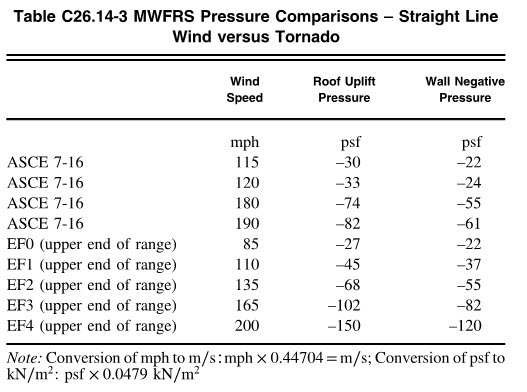Tornado Alley

I live in Oklahoma and during the Spring and Fall seasons we tend to have a lot of tornadoes, and that’s why this part of the country is part of the region dubbed “Tornado Alley.” Since our company sells the MecaWind software, we sometimes get asked whether MecaWind calculates wind loads for tornadoes.
Does ASCE 7 Address Tornadoes?
The short answer is no. There is a section covering tornadoes, and this section consist of the following sentence:
ASCE 7-16 Para 26.14 Tornado Lmitation
“Tornadoes have not been considered in the wind load provisions. “
Well that was simple, so I guess this is where the article ends? Not exactly, in the commentary of ASCE 7-16, Para C26.14 there is some more guidance on the topic. There is quite a bit of additional guidance in this section, and I will pull out the highlights in this article.
What is an EF?
After a tornado, the meteorologists usually determine the magnitude of the tornado by specifying an EF number. The smallest tornado’s are EF0 and the largest are EF5. The EF value is the “Enhanced Fujita” scale, and it determines the range of wind speeds.


Should I design for these wind speeds?
In the central United States the probability of a specific location experiencing an EF0 or EF1 rated tornado, is on the order of 4,000 years. ASCE 7 commentary recommends that if you are designing a Category IV (Essential) structure, that it would be prudent to use the EF1 wind speeds for design, since it would normally be a minimal increase in wind speed.
The probability of a site experiencing an EF4 or EF5 tornado are on the order of 10,000,000 years. According to the National Weather Service (NWS) between 1950 and 2013 there were 56,221 recorded tornadoes. Of these, only 4% were rated as EF3 and 1% were EF4-EF5; therefore the chances of experiencing an EF3 or higher is very remote.
Although it’s not practical to design most structures for an EF4 or higher wind speed, it certainly is advisable that a safe room be designed for these loads. Figure C26.14-2 gives the recommended design wind speeds for safe rooms in different part of the USA.

Is a Tornadic wind different from Straight Line wind?
Studies have found that tornadoes are more likely to generate wind borne debris compared to non-tornadic winds of the same speed. The momentum of wind-borne debris generated by EF3 speeds may exceed the impact test criteria adopted from hurricane opening protection.
ASCE 7 has provided a comparison to compare various wind speeds due to tornadoes in Table 26.14-3. You can see that even for lower tornadic wind velocity, larger roof and wall pressures are generated rather than a straight line wind of the same or greater speed.

Conclusions:
ASCE 7 doesn’t include provisions in the main standard for calculating wind pressures for tornadoes; however, there are some provisions provided in the ASCE 7-16 Commentary C26.14. If you refer to that section you will find some guidance on how to estimate wind pressures for tornadoes.
Update July 9, 2020:
An Engineer very knowledgeable about the requirements of designing for safe room’s contacted us with some additional information relevant to this topic. This information is very useful, and so I am updating this article to include this additional information:
The International Building Code (IBC) addresses Tornado’s and Safe rooms in Section 423. In this section it requires that a safe room be considered a Risk Category IV structure, and it also refers to ICC 500.

Referring to International Code Council (ICC) 500, it requires that the designer follow ASCE 7 with some modifications:

The wind speeds are to be taken from the maps provided in ICC 500 Section 304.2. The overall US map is shown below, but more detailed maps of each region can be found in the standard.

Some other special modifications to ASCE 7 are provided in Sections 304.3 through 304.9 (see below):

